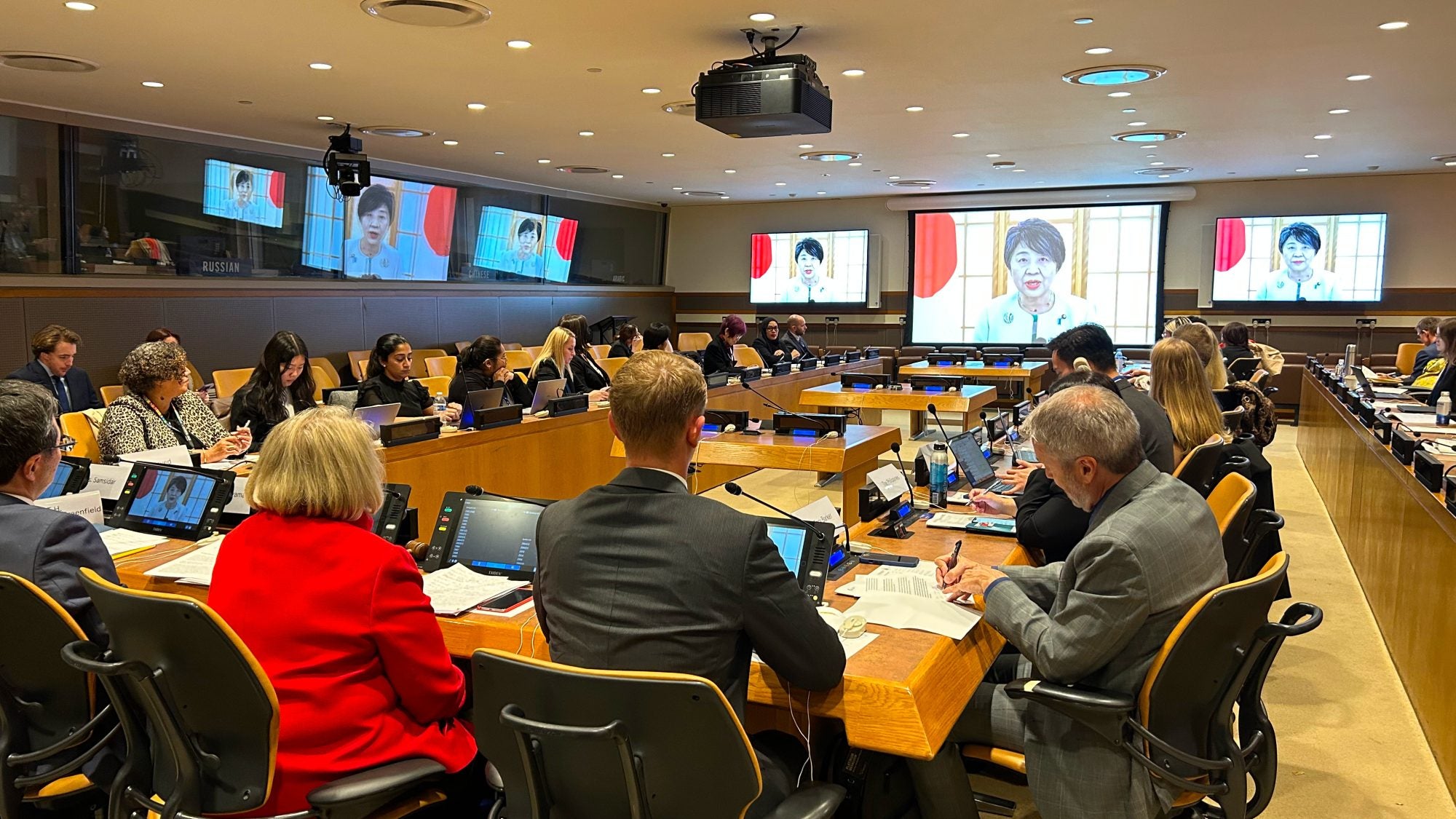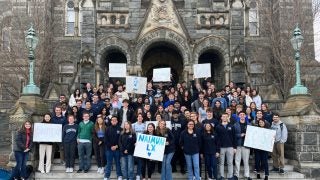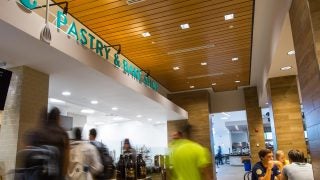I would say I’m your typical Georgetown SFS student. I keep up with what’s going on in the world, I’m fascinated by diplomacy, and I have always aspired to work for the United Nations. And while it’s too soon to say that I’ve accomplished that, I did have the special opportunity in October to attend an event at the United Nations Headquarters in New York!
The event — titled “Engaging Men as Allies in Women, Peace and Security” — was co-hosted by the Permanent Mission of Japan to the United Nations, the United States Mission to the United Nations, the Georgetown Institute for Women, Peace and Security (GIWPS) and the Sasakawa Peace Foundation. The event launched a new report by the Georgetown Institute for Women, Peace and Security which explores masculinity norms, challenges conventional assumptions about men and violence and reinforces the need for context-specific understanding to challenge patriarchal structures at the societal level in Southeast Asia.
Follow along with me as I take you through my day at the United Nations.
8:30 a.m. I turned off my alarm, not as disdainfully as usual, and immediately rushed to check the bus schedule. I stayed at my family’s home in New Jersey for the night, which was great because I got a lot more sleep than I would have if I had taken the morning train from Washington, DC, to New York. The downside, however, is that I was stuck dealing with NJ Transit, which loves to give me a hard time, especially on days that I really need it to be on time.
9:57 a.m. After getting ready and a quick breakfast, I boarded the bus to Port Authority. Because it was no longer rush hour, the express bus wasn’t running and I was stuck in the local bus for an hour. I then took the subway to Grand Central Terminal, and despite having lived in northern Jersey for most of my life, this was my first time seeing it!

11:30 a.m. After wandering around a little bit, I did what has always been my favorite thing to do in the city: visit a new coffee shop. The coffee shop I tried was Ground Central, which felt very fitting, and I picked up a latte and a croissant before heading over to the Millenium Hilton New York One UN Plaza, which is just a few blocks from the Headquarters. 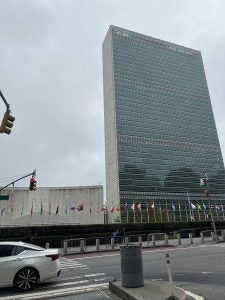
12:15 p.m. I met up with Lana Kweon, the program coordinator at GIWPS in the lobby of the hotel and debriefed about the upcoming event before walking over together. Even though it was a gloomy day, the UN building looked so pretty and the flags outside made everything feel very official.
12:30 p.m. I excitedly stepped through security, as my eyes were glued to the big hallways and large groups of people, and the hint of nerves inside me began to subside. We received special passes and made our way through multiple security clearances before finally reaching the conference room, where we were greeted by Ambassador Melanne Verveer, executive director of GIWPS. As we were walking through the building, passing conference rooms and coffee stands, I remember noticing how diverse and exciting every conversation looked. It truly felt like I was at the center of global change!
12:45 p.m. Everyone started to set up and I was seated at a very official-looking roundtable, close to the panelists. Attendees began to trickle in, and it occurred to me quickly that people in the UN don’t exactly run on official time.
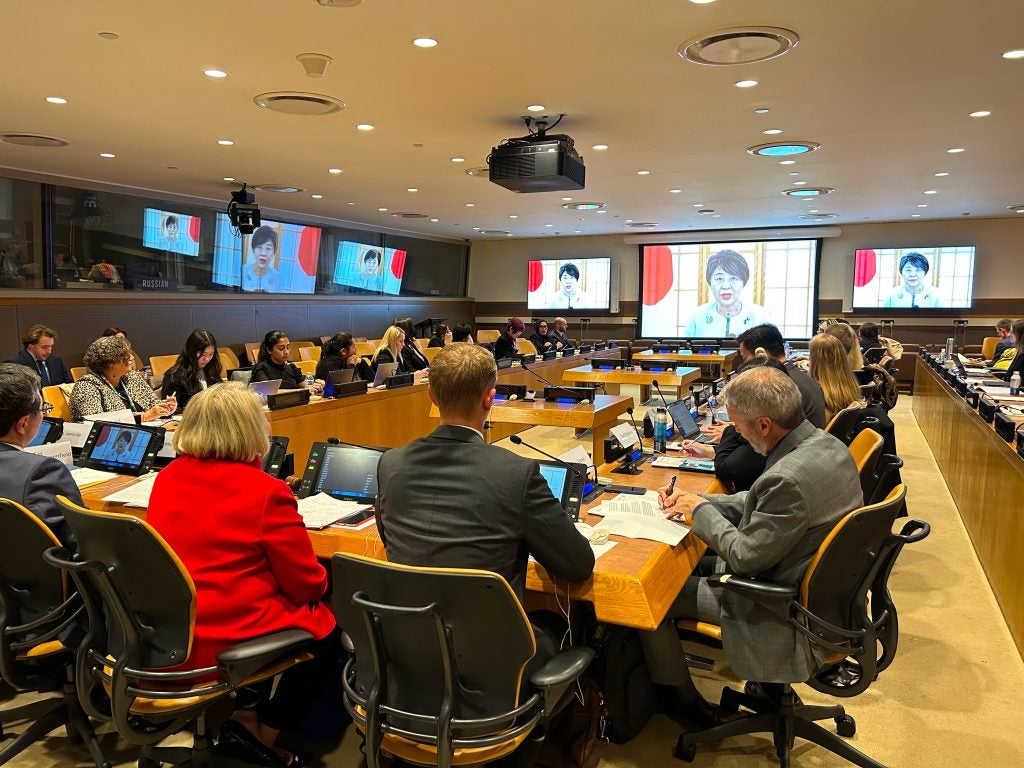
1:10 p.m. The event was scheduled to open at 1 p.m., and as more attendees were walking in, Ambassador Verveer began her welcome address on today’s topic of gender inequality. She discussed that the United Nations had adopted a resolution on Women Peace and Security and the role of gender equality. However, she also spoke on how gender equality is often hindered when we fail to harbor male engagement, leading us to the discussion of the day of engaging men to advocate for women in the peace and security field.
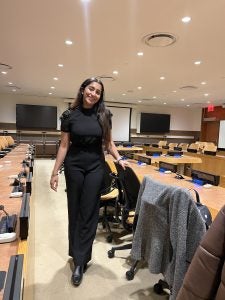 1:20 p.m. The first speaker was Kamikawa Yoko, minister for foreign affairs of Japan, who gave a wonderful virtual speech about the importance of implementing a Women, Peace, and Security agenda. She is the first female foreign minister of Japan in over 20 years and has made strides to increase youth participation and women’s leadership in Japan.
1:20 p.m. The first speaker was Kamikawa Yoko, minister for foreign affairs of Japan, who gave a wonderful virtual speech about the importance of implementing a Women, Peace, and Security agenda. She is the first female foreign minister of Japan in over 20 years and has made strides to increase youth participation and women’s leadership in Japan.
1:25 p.m. Following the video message, we heard from Maho Nakayama, director and senior program officer of the Peacebuilding Program at the Sasakawa Peace Foundation. The Sasakawa Peace Foundation is a private corporation that works in conflict areas in Japan. She spoke about their work in engaging men to further women’s rights and leadership in those areas. I loved learning about the intersection of disaster relief and women’s leadership!
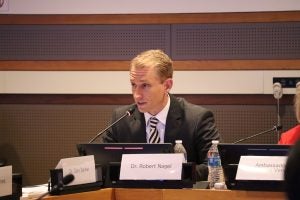
1:30 p.m. After the introductory speeches, we got to hear a research briefing from Robert Nagel, a research fellow at GIWPS. This research in Women, Peace and Security was conducted in the conflict-affected areas of Indonesia and the Philippines where the Sasakawa Peace Foundation works. Nagel’s research aims to challenge the idea that women are solely responsible for gender equality, push beyond the assumption that all men are violent and encourage working with men to meet WPS goals.
I loved hearing about the key findings of this study, especially because I’ve never thought of using male engagement as a mechanism to promote women’s rights. However, this panel opened my eyes to how important women’s roles in the home and their role in encouraging masculinity can have an impact on combatting the patriarchy. My main takeaway which Robert Nagel emphasized was that it is not enough to empower individual women or men. Instead, we must work to change the entire system.
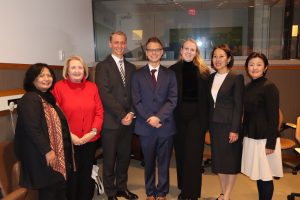
1:50 p.m. We then heard from a panel of stakeholders, including Ms. Samsidar, chair of the Board of Trustees at the Indonesian Justice and Peace Foundation, Gary Barker, president and founder of Equimundo, and — the person I was most excited to meet — Ambassador Linda Thomas-Greenfield, representative of the United States of America to the United Nations. They spoke about their views on men as allies and advocates for women’s empowerment, all from very different lenses ranging from the nonprofit sector to the policy sector. Representatives from the Philippines, Indonesia and Ukraine also engaged in audience Q&A, which made the discussion much more interactive — it felt very much like what I expected the UN to look like!
2:35 p.m. Finally, as the conference came to a close and after Ambassador Verveer gave her closing remarks, I had to opportunity to speak to the authors of the research study. They spoke highly of their work as Hillary Rodham Clinton Fellows, which is how they came across the opportunity to assist on the “Beyond Engaging Men” study. It inspired me to the take advantage of the opportunities we have here at Georgetown, especially because they are so diverse, and I could end up stumbling upon something I had never imagined myself being interested in!
3:10 p.m. As I stepped out of the UN building, I reflected on how grateful I was to have been able to experience the center of global change. Although it was one meeting, it sparked intellectual discussion around a serious issue and brought to light potential policy changes that must be made going forward surrounding Women, Peace and Security. Hopefully, this wasn’t my last time at the United Nations, but until my next visit, I’m looking forward to engaging more with global policy and women’s empowerment, especially with GIWPS!
